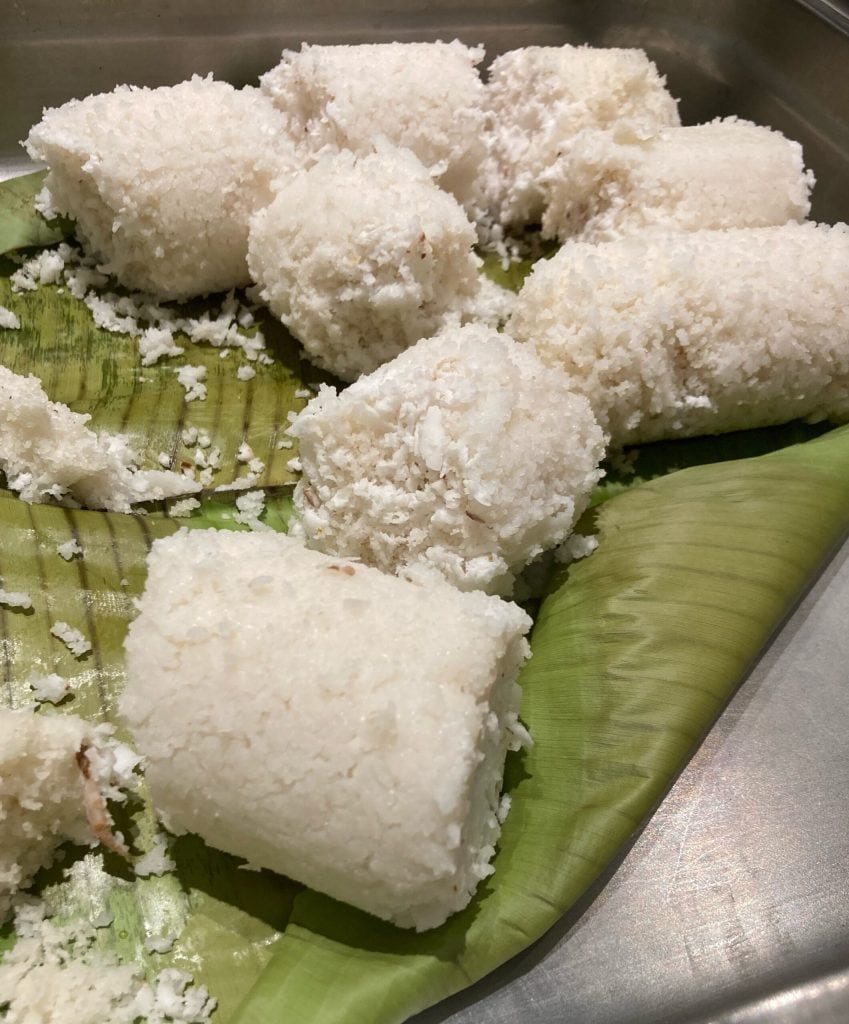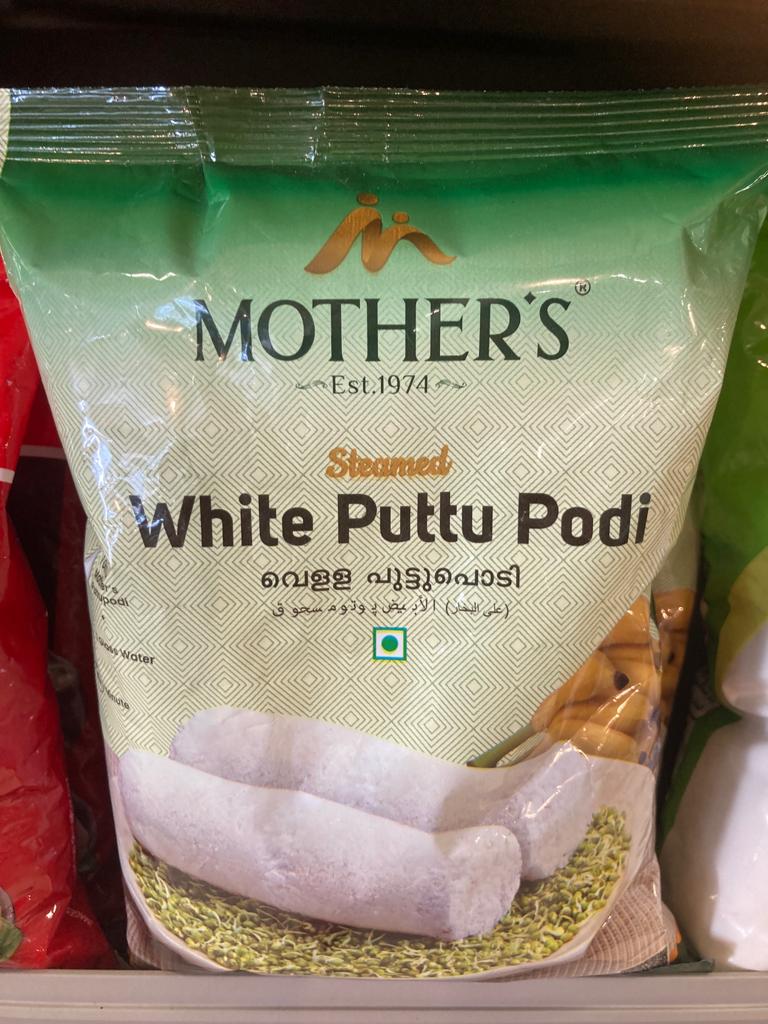Puttu, or pittu, meaning “portioned” in Tamil and Malayalam, is a dish consumed during breakfast in Kerala, some areas of Karnataka, and Sri Lanka.
It is a cylindrical dish made from ground and steamed coconut and rice.
Sometimes, it contains a filling that can be savory or sweet.
It is often spiced with cumin and served with various sides like palm sugar, kadala kari (black chickpea curry), bananas, or plantain.
Puttu is prepared by slowly adding water to the ground rice until the ideal consistency is reached.
It is then spiced, shaped, and steamed along with grated coconut.
Ready-made packages with a rice and coconut mix are also available in Indian supermarkets (see below).
It is generally cooked in an aluminum container: a two-section puttu kutti.
The bottom part contains water and the top part contains the puttu, where the rice mixture is inserted with layers of grated coconut.
Perforated lids separate the sections to allow the steam to pass through them.
Various alternative cooking vessels are used, such as traditional ones where a perforated coconut shell is attached to a bamboo section, or a chiratta puttu made from a coconut shell or metal shaped like a coconut shell.
Other types of cooking vessels include pans similar to an Idli pan with small holes at the bottom or pressure cookers.

- Difficulty: Medium
- Cost: Very cheap
- Rest time: 1 Hour 30 Minutes
- Preparation time: 40 Minutes
- Portions: 4 people
- Cooking methods: Steaming
- Cuisine: Indian
- Seasonality: All seasons
Ingredients
- 1 cup Basmati rice
- 8 tablespoons grated coconut (rapè)
- to taste cumin (in seeds)
- to taste salt
Tools
- 1 Metal cylinder puttu kutti
Steps
Soak the rice in enough water for 1 hour.
Drain and dry on a towel for 30 minutes.
Blend the rice, then sift it.
Add salt to the rice.
Slowly add water (preferably warm) to the ground rice until the correct consistency is achieved.
Note: Using warm water will improve the softness of the puttu.
Add cumin and steam.
If you don’t have the cylindrical puttu kutti tool, you can use a coconut shell with three holes, although this won’t achieve the traditional cylindrical shape.
Open one of the three holes in the coconut making it larger.
Layer in the coconut: 1 tablespoon of coconut and 1/4 of the rice mixture until used up (repeat or use a second coconut if necessary).
Steam the filled coconut.
Invert the coconut and serve with the desired side dish.

Variants:
Muslims in Kerala eat a version of puttu called irachiputti where the rice is layered with spiced minced meat.
In areas of Karnataka they have a simple variant with masala made with grated coconut and mutton or shrimp.
In Tamil Nadu it is served with grated coconut with jaggery made from palm or cane sugar, or with sweetened coconut milk.
The Sri Lankan variant is usually made with wheat flour or red rice flour and is without cumin, accompanied by curry tripe, fish or meat curry, coconut milk, and a sambol.
In Bangladesh, the exterior is made from a mixture of rice flour and moong dal flour, while the filling is a mixture of coconut flakes and a caramel-like sweet similar to dulce de leche.
In Mauritius it is often incorrectly spelled as poutou, but should be spelled putu in Mauritian Creole. The ingredients are the same: rice flour, sugar, and dried coconut, but cooked in metal cylinders.
In Indonesia kue putu is typically green due to the use of pandan (a palm-like shrub) flavor and is commonly found from street vendors along with klepon, which is a ball-shaped kue putu.
In the Philippines, puto bumbong is deep purple in color due to the use of a unique rice variety called pirurutong. They are culturally significant as a common traditional Christmas sweet. “Puto“, in the Philippines, is also a generic term for traditional steamed rice cakes.
FAQ (Frequently Asked Questions)
Where can I buy a puttu steamer?
It can be purchased online: Stainless Steel Puttu Maker

